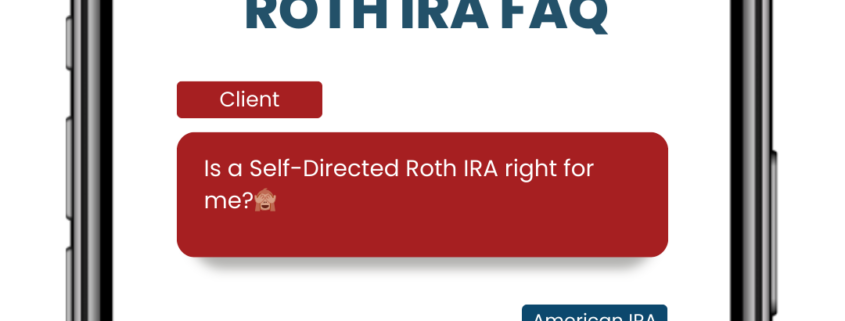Self-Directed Roth IRA FAQs
Self-Directed Roth IRAs can be powerful mechanisms to use to build a retirement portfolio. Even more importantly, they can help investors diversify a retirement investment portfolio beyond the typical retirement investments of stocks and bonds. But what are the questions to answer about Self-Directed Roth IRAs before you get started? We gathered a few Self-Directed Roth IRA FAQs below to help elucidate how these accounts work.
Self-Directed Roth IRA FAQs
Are Self-Directed Roth IRAs Good for Retirement Planning?
Self-Directed Roth IRAs are a great option for a lot of investors. Especially those who want to save for retirement without having to fix themselves to the same modes of IRA investing as people who don’t self-direct. What does that mean, exactly? It means with a Self-Directed Roth IRA, you’ll have more choices—and you’ll be free to make those choices as you see fit. Obviously, as long as these choices conform to retirement planning rules and regulations. Self-Directed Roth IRAs can also be used for longer periods of time than other types of accounts. This is because other accounts may have required minimum distributions (RMDs) after you hit a certain age. This can give you a tremendous amount of flexibility later in retirement as well.
What are the Pros and Cons of Self-Directed Roth IRAs?
Self-directed Roth IRAs are a great option for those who want to have a simple retirement account with minimal worry—and minimal fuss. When working with an administration firm, you have a custodian on your side who will help you handle burdensome paperwork and administration.
There are some pros and cons to self-directed Roth IRAs worth mentioning here. The biggest pros of self-directed Roth IRAs are that they can help people save more money. Especially if they’re planning on using them over long periods of time. The biggest con of Self-Directed Roth IRAs? The low contribution limits. You may find yourself wishing that you could put more money within a Roth IRA, but sadly, there isn’t much flexibility on this issue.
How Does One Create a Self-Directed Roth IRA?
To create a Self-Directed Roth IRA, fill out the appropriate paperwork with a Self-Directed IRA administration firm, plan on how you’re going to fund the account (transfer? Rollover? Direct contribution?), and then begin to plan on how you’re going to invest the account. Remember: you’ll be the one in charge of this account once you get started.
Once you have the Self-Directed Roth IRA ready to go, you’ll likely find that it’s a powerful investment tool for your retirement plans. But remember—like Rome, retirement success isn’t built in a day. It takes a lifetime of planning and execution on that plan to make sure that you come out the other side of your retirement journey with plenty of money in accounts like Self-Directed Roth IRAs.
Are Self-Directed Roth IRAs Right for You?
How can you tell whether a Self-Directed Roth IRA is right for you? Review the rules, the contribution limits, and how they work—and you’ll start to sense if these accounts might be good for your situation. Once you have an answer there, you can start to initiate the next steps. That’s when it’s time to start seeking out a Self-Directed IRA administration firm who can help you with some of the steps in this journey. With a Self-Directed IRA administration firm in your corner, you can easily handle your retirement account. You can issue buy and sell orders, alternative investments, and generally managing the kind of retirement portfolio you always wanted to have.
Interested in learning more about Self-Directed IRAs? Contact American IRA, LLC at 866-7500-IRA (472) for a free consultation. Download our free guides or visit us online at www.AmericanIRA.com.







